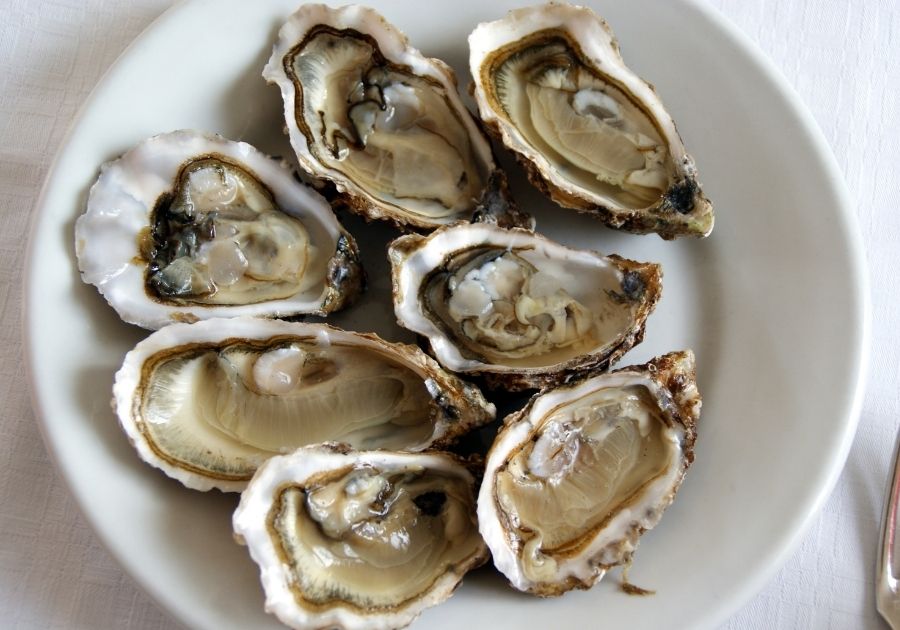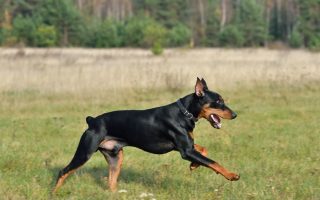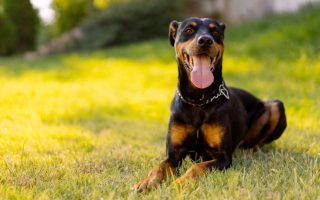There is no arguing that both the Pomeranian and the Samoyed dog breed can equally win for striking looks and charming personalities.
These 2 dog breeds make it difficult for any potential dog parent to choose which one to adopt.
So, suppose you have also found yourself in this predicament, where you cannot make up your mind between adopting the Pomeranian Vs Samoyed.
In that case, I am here to assure you that after reading this article, you will be ready to choose which dog breed you will be adopting.
I will be providing you with in-depth details on the history, physical appearance, nutritional requirements, lifespan, health conditions, and grooming and maintenance of each of these 2 dog breeds.
I will also walk you through the main differences that set apart the Pomeranian Vs Samoyed.
| Attributes | Pomeranian | Samoyed |
| Good For First Time Owners | With Restrictions | Yes |
| Good Guard Dog | No | No |
| Apartment Friendly | Yes | With Enough Exercise |
| Good Family Dog | With Restrictions | Yes |
| Shedding | High | High |
| Barking And Howling | High | High |
| Height | 6-7 inches (15-18 cm) | 18-24 inches (48-60 cm) |
| Average Life Expectancy | 12-16 Years | 12-14 Years |
[wpsm_toplist]
Pomeranian – Dog Breed Information

History
The Pomeranians (sensationally nicknamed Pom, Zwergspitz or Dwarf spitz) are believed to have originated from both Germany and Poland in the Pomerania region.
Despite their small size, these toy dogs (they are classed as toy dogs due to their small size) are descendants of large Spitz dogs, particularly the German Spitz.
This hound gained popularity around the 18th century due to the royalty love it received from Queen Victoria.
The American Kennel Club (AKC) recognized this personality endowed dog as a breed in 1888.
Physical Appearance
These adorable toy dogs normally grow to a height of 6-7 inches and weigh approximately 3-8 pounds as adults.
The Poms have a thick textured double coat. Initially, this dog breed had its coat being white, brown, or black.
But breeders have selectively bred these dogs to produce appealing shades of red, blue, brown, shaded gray, orange, cream, and tan.
Merle-colored Poms are also on the rise. Normally these vibrant dog breed has almond-shaped brown eyes.
However, a Pom can have hazel or blue eyes, although this rarely occurs.
These hounds have small-sized triangular ears which are pointed and held high on a wedge-shaped head.
Lifespan And Health Conditions
Pomeranians typically have a life expectancy of 12-16 years.
However, some medical conditions listed below tend to plague this fashion-oriented dog, which lowers their life expectancy or quality.
These medical conditions include;
- Hypothyroidism
- Alopecia X or Black skin disease, which causes partial or total loss of your Pom’s coat/hair
Tracheal collapse – Characterized by difficulty in breathing, severe coughing, which is associated with gagging or vomiting, and bluish coloration in your dog’s mucous membranes (inner mouth gums mostly)
Luxating patella – A medical condition in which your Pom’s kneecap keeps on dislocating (moving out of its anatomical position)
Nutritional Requirements
Pomeranians require food rich in quality proteins. A growing Pom should be fed with more protein-rich food when compared to an adult Pom.
You should at least provide your Pom with 3 meals a day.
Note due to their miniature size; These hounds tend to lose more energy in form of heat fast when compared to other large dogs, so don’t feed it small quantities of food just because it’s small in size.
Fully cooked turkey, salmon, chicken, and lamb are some of the foods you can give your Pom.
These Dwarf Spitz are best fed with dry food due to their dental issues.
Pro tip; Never at any time feed your Pom grapes or raisins.
These fruits contain very potent toxins that can cause your dog to have a life-threatening medical emergency.
Grooming And Maintenance
It’s important that you brush your Pom on a daily basis to maintain its lustrous coat.
Ear cleaning should be done at least once a week. It would help if you also bathed this lively dog once a week without skipping.
Make sure that you fully dry your Pom after a bath to avoid exposing it to getting a cold.
Temperament
The poms are extremely outgoing, playful, and energetic despite their small size.
These attention-loving dogs are also very intelligent as they respond quickly to their training.
These sassy hounds can also become very stubborn, aggressive, and territorial, especially when they feel that you are somewhat ignoring their needs.
So, ensure that you adopt an Alpha mentality and let your Pom know who is the boss when it’s still a pup.
Samoyed – Dog Breed Information
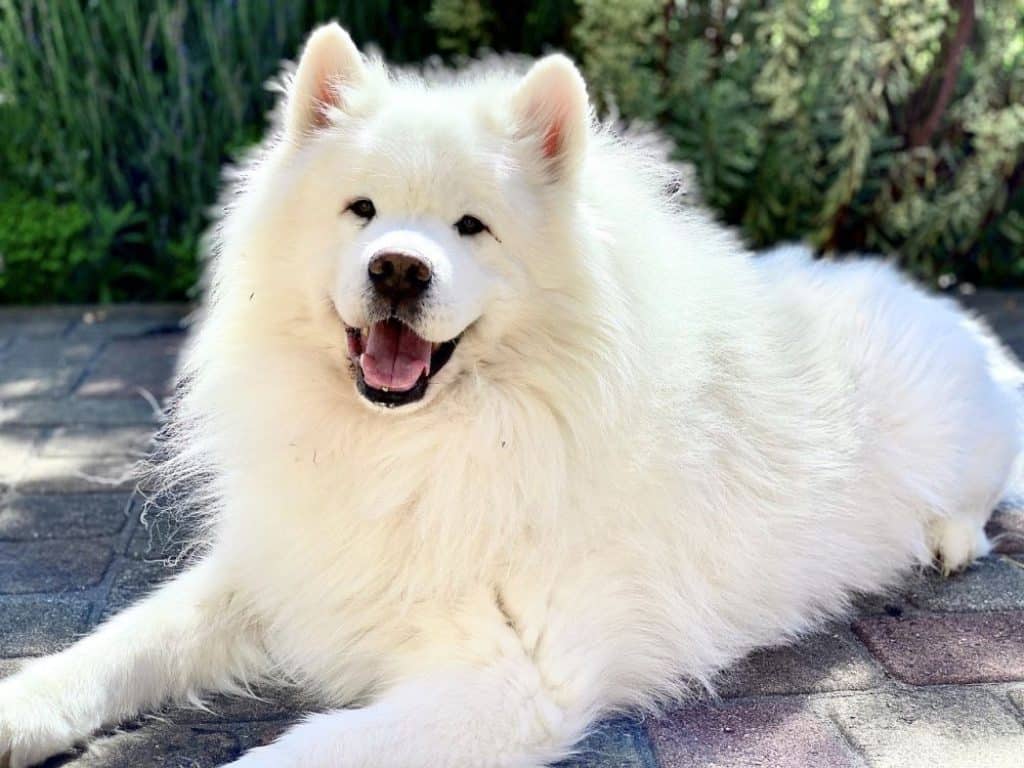
History
The Samoyed (also known as Bjelkier or Samoideskaya Sobaka) is a Eurasian dog whose origins can be traced back to the Samoyede people, who are natives of Siberia (a region in Russia) who speak the Samoyedic languages.
These dogs, initially called Samoyede (notice the vowel “E’ at the end), are descendants of the Nenets Herding Laikas.
These sassy-looking dogs were specifically bred to herd, hunt, guard, and pull sleds in Siberia’s snowy mountains.
This sturdy and agile hound was recognized as a breed by the American Kennel Club in 1906.
Physical Appearance
This beautiful dog breed tends to grow to a height of 18-24 inches long.
Their white, cream or biscuit double coats are water-resistant and help these hounds adapt to very cold conditions.
This sturdy hound also has a plumed tail, usually curled and placed on one side of its back.
Samoyeds use their tails to warm their face or nose, particularly when the temperatures are very low.
These hounds have brown or black almond-shaped eyes; some of these dogs may also have blue eyes.
They have triangular, erect ears that are perfectly positioned in their broad heads.
Lifespan And Health Conditions
A Samoyed can live a happy dog life of 12-14 years, provided that you physically and mentally stimulate it daily and offer it with the necessary nutritional requirements.
Below is a list of medical conditions that tend to plague the Samoyeds;
- Hip dysplasia
- Heart diseases
Progressive retinal atrophy (PRA) – A condition that typically complicates to blindness in Samoyeds
Nutritional Requirements
A Samoyed can survive on 2 meals a day. Note, these hounds were bred in an area where they was a scarcity of food.
Hence they have evolved to adapt to survive on small amounts of food.
PS; I am not suggesting that you be stingy with your Samoyed’s food portions ;).
Dry foods that are balanced in protein, carbohydrate, and vitamin levels are highly recommended to be fed to a Samoyed.
Vegetables such as broccoli and Carrots are ideal for a growing or an adult Samoyed.
Temperament
Samoyeds ace at being gentle, outgoing, lively, and playful.
There are also explorers, curious and quite strong-willed if they feel their needs are being under met.
This energetic breed also has a great ‘resume’ for being nonaggressive, kid, and pet-friendly.
Grooming And Maintenance
Brushing a Samoyeds fur requires much more time than most of its related Spitz dogs.
A Samoyed needs to have its hair brushed at least 2 times a week and have a bath once every 4-6 weeks.
Pomeranian Vs Samoyed – What Are Their Differences?
| Pomeranian | Samoyed |
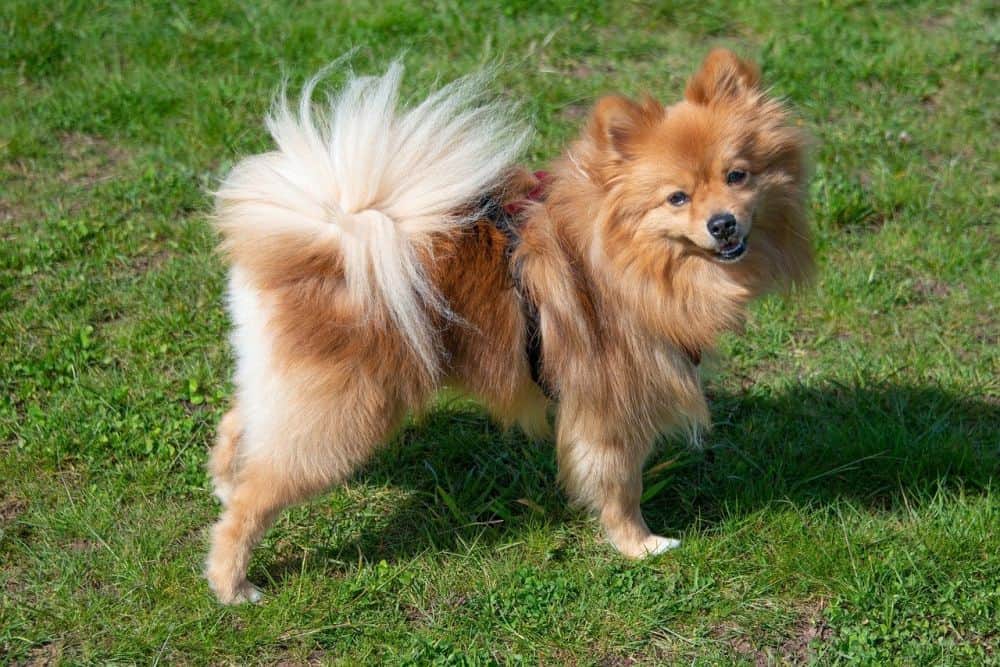 | 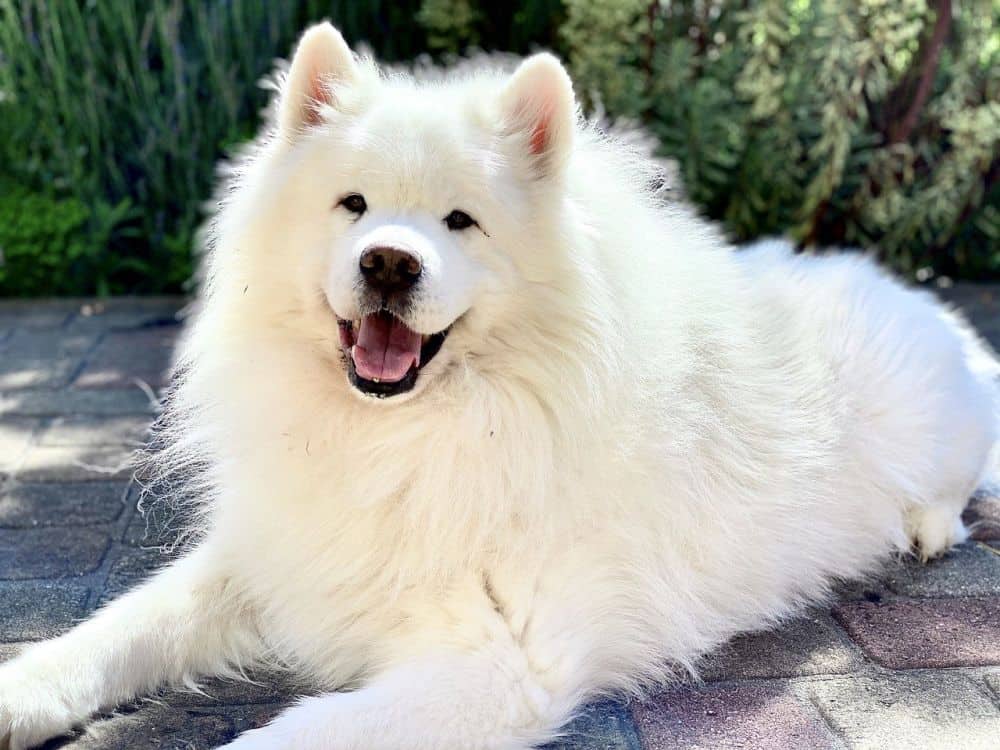 |
Country Of Origin
The Pomeranians come from Germany and Poland, whereas the Samoyeds originate from Siberia, Russia.
Weight And Size
Poms are small in size, measuring around 6-7 inches and weighing about 3-8 pounds as adults.
On the other hand, Samoyeds are medium-sized breeds measuring around 18-24 inches and may weigh approximately 35-66 pounds as an adult.
Grooming Requirements
Poms need to have their fur brushed daily and bathed at least once a week
Samoyeds require to have their hair brushed at least 2 times a week and washed once a month.
However, between these 2 dog breeds, the Samoyeds need much more time to be adequately groomed
Shedding Potential
Samoyeds are quite heavy shedders compared to Pomeranians
Barking Tendency
Poms tend to bark way more than the Samoyed dog breed.
Hence it’s vital that you train your Pomeranian the ‘Quiet’ command when it’s still a pup to avoid unnecessary and excessive barking behaviors in your hound.
Wandering And Escaping Potential
Samoyeds are quite adventurous, making them to have a greater potential of wandering off or escaping when compared to the Poms.
Hence it’s essential that you remove any objects that can aid your Samoyeds in jumping over the fence and wandering off.
Ensure that your Samoyed is leashed each time it’s left unsupervised.
Independence
·Poms are very dependent dogs and won’t tolerate being left alone even for a short duration
·Samoyeds are a bit independent and may tolerate spending some alone time even when the owner is still around
Pro tip; Be sure to keep an eye on your Pomeranian as it’s more susceptible to developing separation anxiety, especially when it has not been properly detached from its owner.
Pomeranian Vs Samoyed – Which One Makes A Better Pet?
Pomeranian Vs Samoyed both make good pets to have around.
However, the Pomeranian is not an ideal pet for a first-time dog owner, as they tend to be quite stubborn, territorial, and aggressive.
All of these qualities can easily scare away a novice dog owner. Also, if you have a kid(s) around, please steer clear from adopting a Pomeranian.
On the other hand, Samoyeds are quite kid and pet-friendly and won’t mind sharing their space with anyone who reciprocates their love for them.
Samoyeds are also a good dog breed that can be owned by either a novice or a veteran dog owner, as they are nonaggressive and quite independent compared to the Poms.
Ensure that it’s adequately socialized before adopting a Pomeranian or a Samoyed as your new family member.
Also, be certain that you get your furry friend from a known and certified dog breeder.
Don’t just adopt a dog because you can!
Be sure that you both complement each other’s interests and personalities before taking it to its new home.

